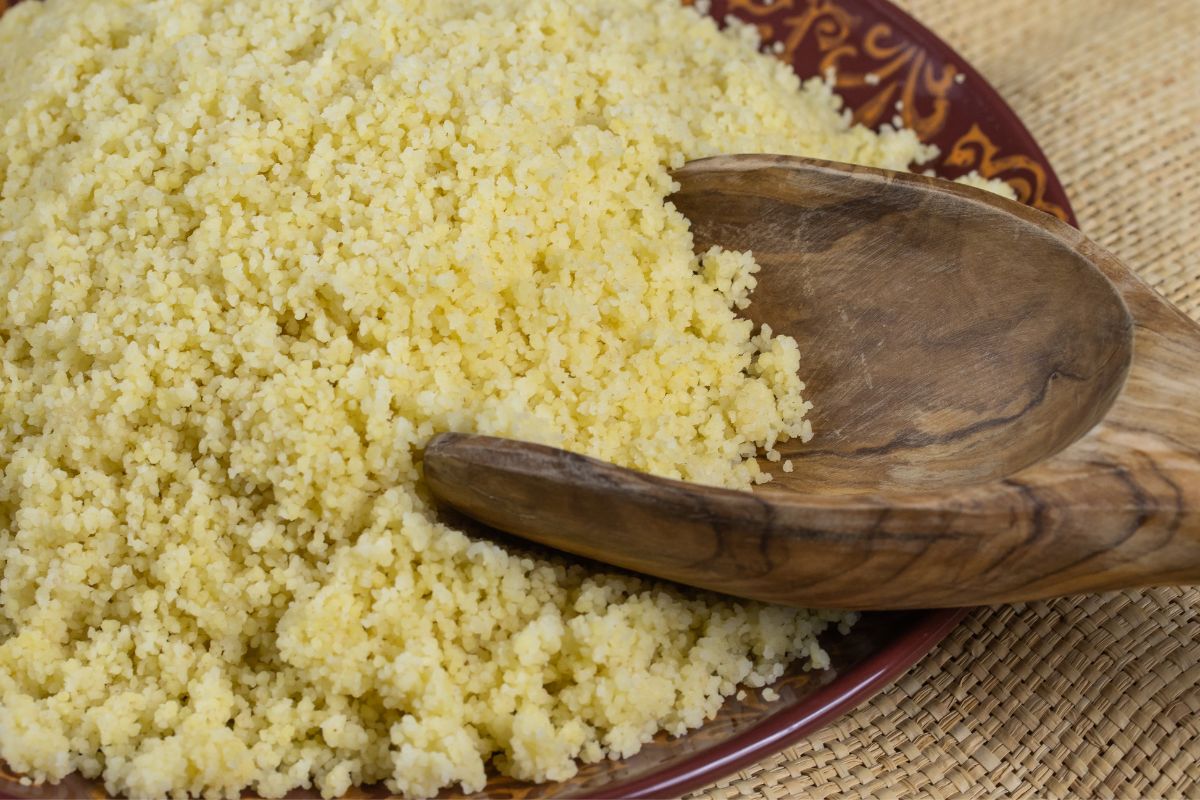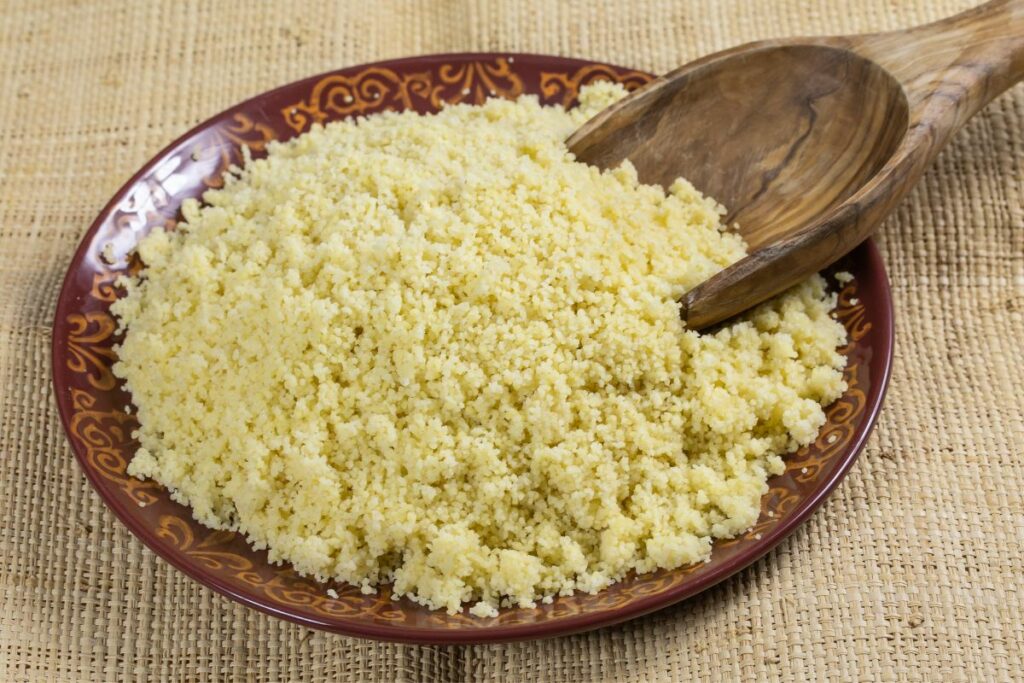With everyone trying to eat healthier these days, if you want to improve your diet you probably have a lot of questions about various foods, though grains and wheat seem to be where many people slip up or get confused.
Grains are one of the best foods to give your body a healthy boost of vitamins and minerals, but some are much healthier than others.
Semolina (sometimes called Durum wheat) is used in a lot of recipes and can be bought in most supermarkets.
Keep reading to find out all about this grain, its health benefits, and whether you should add more of this to your diet.
What Is Durum Wheat/Semolina?
The grain that is used to make semolina is called durum wheat, which is a more robust variety of wheat.
Semolina is the common name for durum wheat flour after it has been milled into a powder and is usually found in foods such as bread, pasta, and porridge.
The color of this flour is darker and closer to that of gold than that of all-purpose flour. It is not overpowering and smells slightly earthy.
In addition to its applications in the kitchen, semolina can also be beneficial to people struggling to control their weight.
Durum is a common wheat strain. Consider “Durum” to be the first name of this grain, and “Wheat” to be its family name.
Due to the greater protein level of the “durum” wheat strain, it is most commonly used in the production of pasta.
Is Semolina A Whole Grain?
The term “Semolina” refers to the coarse grinding of durum wheat that is done to make pasta with an excellent texture. Semolina is a preparation process rather than an actual term for wheat.
When referring to grains, seeing “enriched” on the packaging usually indicates that the grains have been processed.
To make up for the nutrients that are stripped out during the refining process, refined grains are frequently fortified with additional nutrients.
Semolina Nutrition
It is possible to enrich semolina flour, which means that food makers can re-add nutrients that were stripped away during the processing of the durum wheat grain to produce semolina.
The levels of vitamins and minerals found in unenriched semolina are significantly lower than those found in enriched semolina.
Both the high protein and fiber content of semolina, which helps to slow digestion and improve feelings of fullness between meals, make semolina an excellent choice of flour to use in your cooking.
It is also rich in B vitamins, including thiamine and folate, which play several key functions in your body, one of which is assisting in the conversion of the fuel you get from meals into energy.
In addition to this, semolina is an excellent supplier of both magnesium and iron. The synthesis of red blood cells, the health of the heart, and the regulation of blood sugar are all supported by these minerals.
Semolina Health Benefits

Helps With Weight Loss
The consumption of semolina, which is rich in a variety of nutrients, may facilitate weight loss.
To begin, a serving size of a third of a cup (56 grams) of uncooked, enriched semolina provides 7% of the recommended daily intake for fiber, which is a component that is often lacking in many diets.
According to many studies, eating a diet high in fiber is linked to both weight loss and lower overall body weight.
It can also lessen the intensity of sensations associated with hunger and prevent future weight gain.
In addition, semolina is an excellent source of protein. One-third of a cup (56 grams) of uncooked semolina contains more than 7 grams of protein.
Research has shown that upping the amount of protein in your diet will help you shed extra pounds.
Increasing the amount of protein in your diet may also help lessen feelings of hunger, help you maintain muscle mass while dieting, speed up fat loss, and enhance your overall body composition.
A Healthy Heart
Your risk of developing heart disease may be lowered if you consume a diet that’s high in fiber.
There is some evidence that consuming fiber can improve heart health by lowering levels of LDL, or “bad,” cholesterol, as well as blood pressure and general inflammation.
According to one study, eating 23 grams of fiber per day from whole grains like semolina leads to a 5% reduction in your LDL cholesterol levels.
Semolina includes minerals that are beneficial to the cardiovascular system, including magnesium and folate.
Consuming foods that are abundant in these nutrients is beneficial to the health of the heart.
Additionally, studies have shown that diets high in magnesium are beneficial to the health of the heart as a whole.
An increase in dietary magnesium of 100 milligrams per day, for instance, has been shown to reduce the risk of heart failure by 22 percent.
Drawbacks Of Semolina
Before including semolina into your diet, there are a few things to think about first.
To begin, semolina has a lot of gluten, a kind of protein that can be detrimental to individuals who have celiac disease or are sensitive to gluten.
Around 1.4% of people in the world are affected by celiac disease.
It’s estimated that between 0.5 and 13% of people have a sensitivity to gluten that’s not caused by celiac disease (NCGS).
Semolina and other foods containing gluten should be avoided by people who have celiac disease or non-celiac gluten sensitivity (NCGS).
Because semolina is produced by grinding durum wheat, it should be avoided by people who have a wheat allergy because of the potential for cross-contamination.
Summary
Semolina is a type of flour that is produced by grinding durum wheat. Because of its high protein and fiber content, as well as its high B vitamin content, it may help with digestion, heart health, and weight loss.
Most people have no problems consuming semolina, however, a tiny fraction of the population may not be able to stomach it due to the presence of gluten or wheat in it.
If you think you can handle it, you should try including semolina in your diet. Its high protein content works wonders for strengthening the structure and enhancing the texture of baked goods such as bread and pasta.








